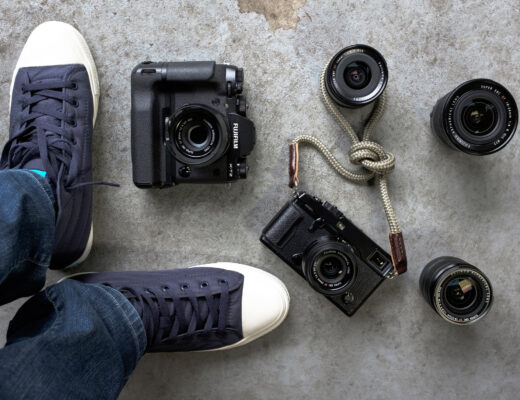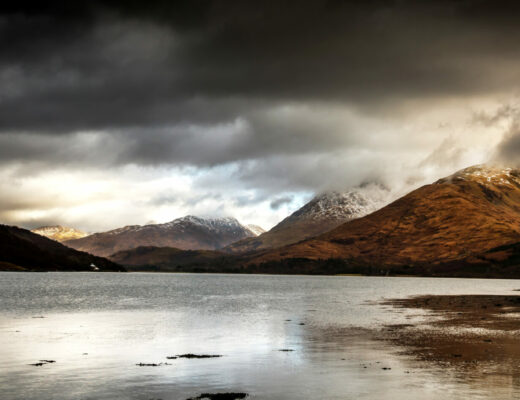While in United Sates last month working on the FIA World Endurance Championship event at Sebring, myself and fellow Fujifilm X Photographer John Rourke and Adrenal Media photographer Marius Hecker decided to head to Palm Beach to go snorkelling with wild Bull Sharks off the Florida coast.
This is something I had never done before, I have only ever been scuba diving once in my life before, and I wanted to get some underwater images without spending a lot of money on an expensive housing for my X Series cameras.
A few years ago I bought a reasonably priced dive bag for my X-T2 to take photographs of gannets diving for fish in the North Sea from the back of a fishing boat. For these shots I rigged up a pole to attach the dive bag to and so I could stay nice and dry – and very warm – on the boat.
For the Florida trip I was going to get into the water with the sharks, so I decided to find the dive bag for the trip.
Equipment and Set Up
The dive bag is a DiCAPac WP-S3 which I bought from Amazon for £46.00. Once I had located it I tested the seals to make sure it wasn’t going to leak with my expensive camera and lens inside. I sealed the bag up with some kitchen paper inside and put it in a bath of water. The paper was completely dry when I removed it from the dive bag, so that was a successful test.
However the DiCAPac WP-S3 dive bag does has a couple of draw backs.
One, you can’t alter the settings on the camera easily and you can’t use the manual focus ring on the lens, so I had to set the camera before I put it inside the bag. There is a little slot for your finger to reach the shutter release and the on/off switch. Some of the buttons can be pressed through the tough plastic on the back of the bag, but that’s about it.
The second drawback was partially down to my lack of experience. I usually have the EVF set to eye sensor so when I put my eye to the viewfinder it automatically switches from the LCD to the viewfinder. I put the camera in the bag and was in the water before I realised that the sensor was being activated by the dive bag and the EVF was selected continuously. Wearing dive goggles made seeing through the EVF very difficult but I couldn’t get out of the water to change the setting to LCD only, so I struggled on composing the best I could using the EVF. A rookie mistake that I wont make again.
I decided to use my X-T2 and XF18mm f2 lens for the dive. I chose the X-T2 over the X-T3 because I needed my T3 for my work at the race track and the T2 was a third back up body (I also had an X-H1 as my second camera). If the bag did leak, and the camera was wrecked, it wasn’t going to impact my ability to complete my paid work at the race circuit.
There were three reasons I chose to use the 18mm. The first was the same reason as I chose the T2 over the T3, a waterlogged 18mm wasn’t going to stop me working.
The second reason was the size of the lens. The lens aperture on the dive bag is fairly narrow and made of solid plastic. The 18mm fitted inside perfectly, where the 10-24mm f4 zoom was too wide.
Thirdly was the field of view is perfect for underwater images, especially when the focus was set to manual and pre focused on infinity.
I set the camera to aperture priority with the lens wide open at f2. I set the ISO to auto from 200 to 6400 and with the minimum shutter speed set to 1/250. As it turned out the water was so bright due to the intense sunlight that the ISO was constantly on 200, with a shutter speed of around 1/500.
Diving With Sharks
The company we had booked the trip with was Florida Shark Diving and it was $195 per person.
There were the three of us in our group plus another couple on the trip. After a short safety briefing we set off for the open ocean to find some sharks. The trip out took about 30 minutes and we were a couple of miles off the Florida coast. These were wild sharks, not ones that were kept in an aquarium, and I must be honest I was feeling a little trepidation as the time approached to get into the water.
The crew had put a basket of dead fish into the water about 10 metres / 30 feet below us and around seven or eight adult Bull Sharks soon came to investigate the possible food source.
We were given the choice of going into a cage or free diving with the sharks. There would be someone in the water with us at all times and so we decided to be brave and get into the water without the cage. The water was around 21 degrees celsius, very warm indeed, and fairly clear down to the where the sharks were swimming around.

Our guide Izzy taking images of the sharks below us – Fujifilm X-T2 + XF18mm f2 – 1/350s @ f2 ISO200
We were snorkelling on the surface and the sharks decided to come up and have a look at us. With the X-T2 on manual focus set to infinity I set about trying to capture some images of these magnificent creatures. The camera was set to capture RAW and JPEG images so I could adjust them in post if necessary (more about this later).
The sharks came quite close, within 3 metres in some cases, but they were just curious and certainly not aggressive in any way.
After 30 minutes the sharks headed back down to the cage of fish. They stayed in the vicinity of the boat for the next hour before we decided to head back to the harbour.
This was one the most exhilarating experiences I have had in my 54 years on planet earth and I enjoyed every second. As this was my first experience of underwater photography I was pleased to see the results I had got with the X-T2 and Xf18mm f2 inside the DiCAPac.
The Underwater Images
Luckily the images, in the main, were sharp. While the water appeared to be crystal clear there was a lot of debris and plankton in the water. Luckily we didn’t see any plastic bottles or any other signs of humans cluttering up the water.
The RAW underwater shots all appeared very flat and overly blue – see image below.
This was easily corrected in Lightroom and after a lot of trial and error I came up with a preset that gave my images the look I wanted – see image below.
The main adjustments were to the colour balance, the contrast and adjustments to the clarity and Dehaze. I did have to add a little bit of noise reduction to compensate for some the graininess that had been introduced as a byproduct of the adjustments that I had made.
Conclusion
While these images were not to the same standard a professional underwater photographer would achieve with an underwater housing and lights, I was very pleased with what I had captured using a £46 / 50€ dive bag, a three year old Fujifilm X-T2 and six year old Fujinon 18mm lens.
I had a series of images that I was very happy with and they were a great reminder of an adventure in the ocean.
CLICK HERE for more information on the DiCaPac WP-S3 Dive Bag on Amazon
CLICK HERE for more information on Florida Shark Diving

























